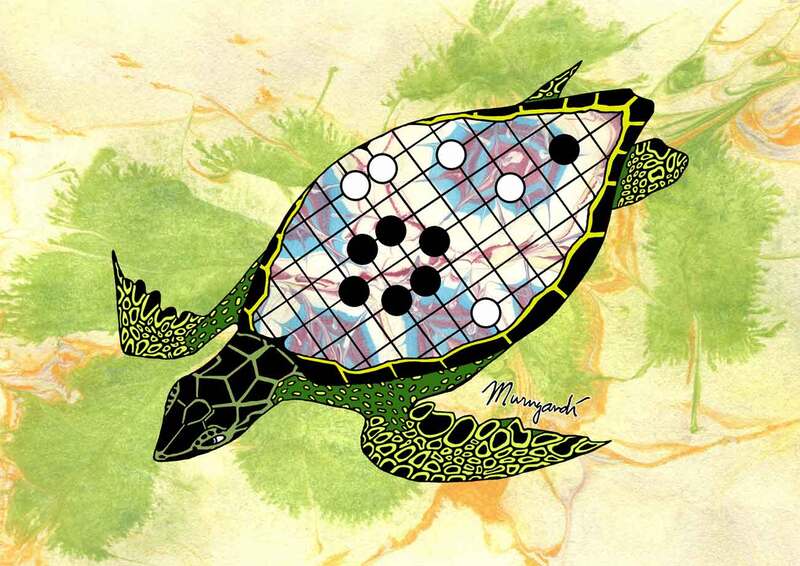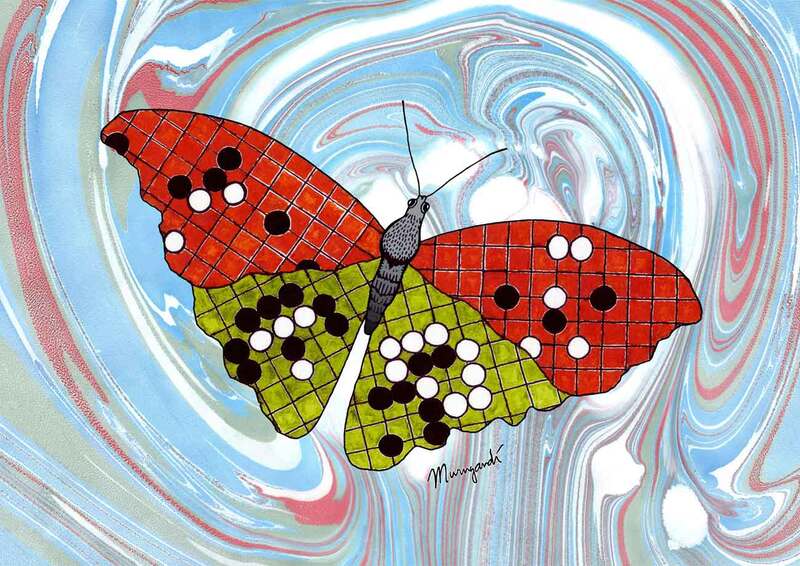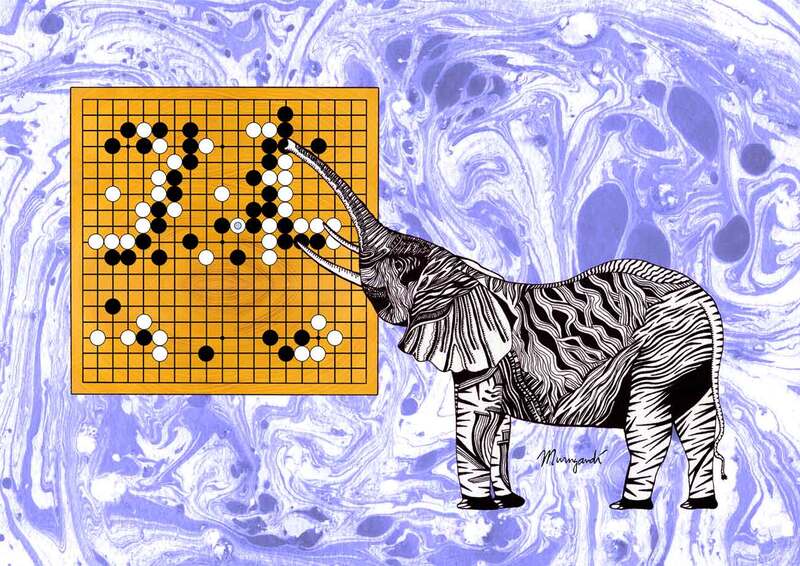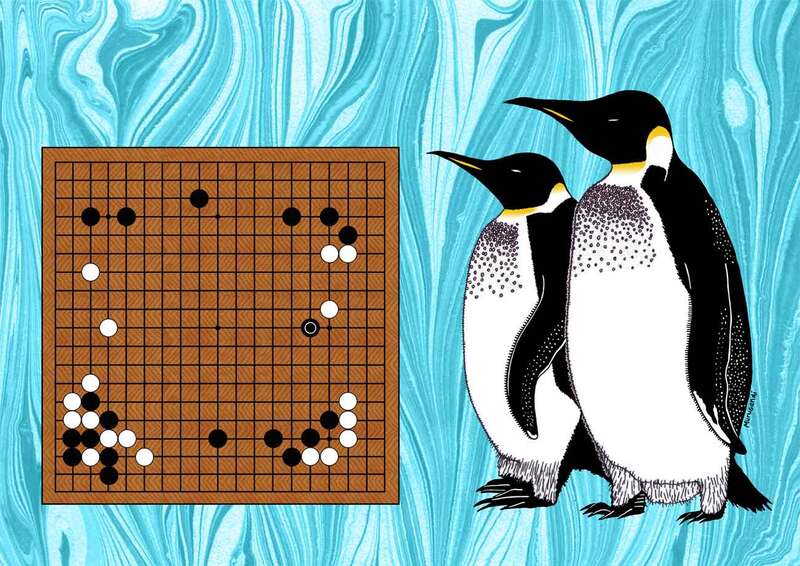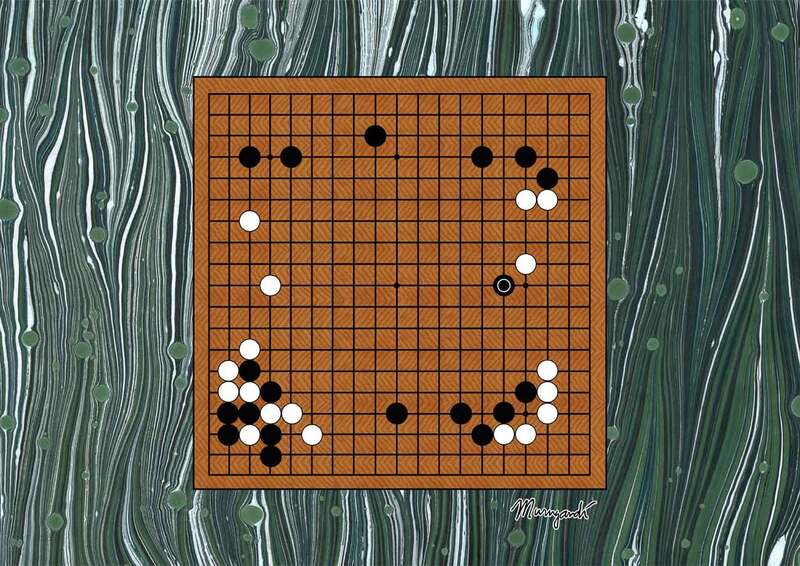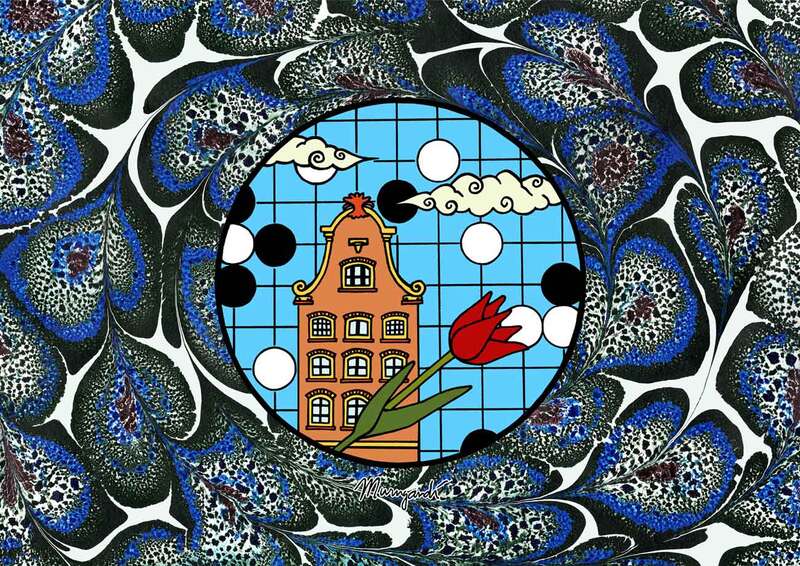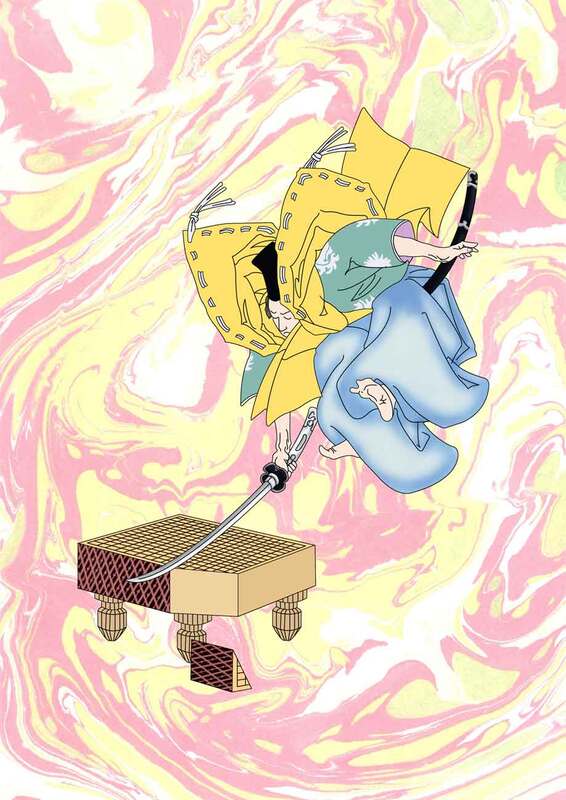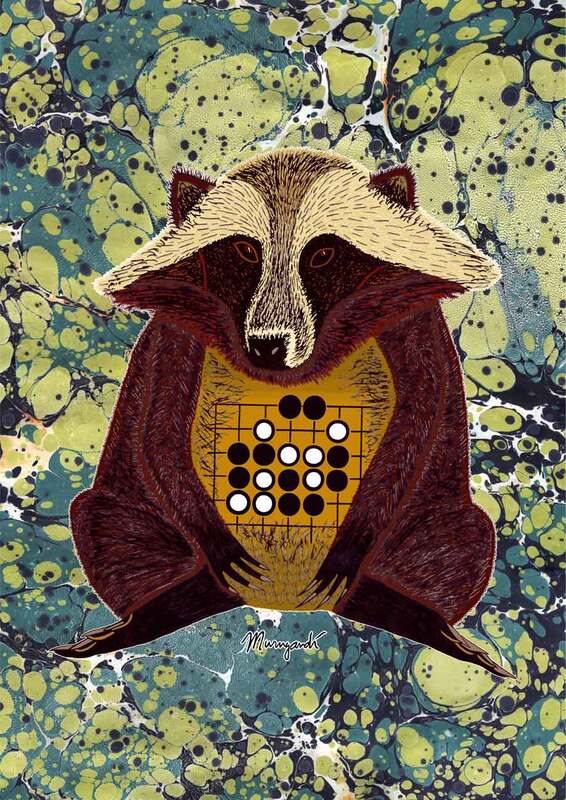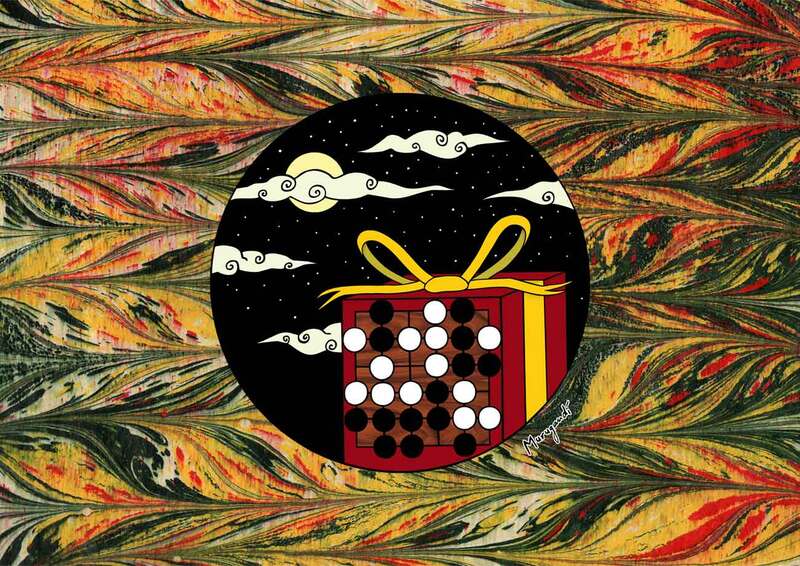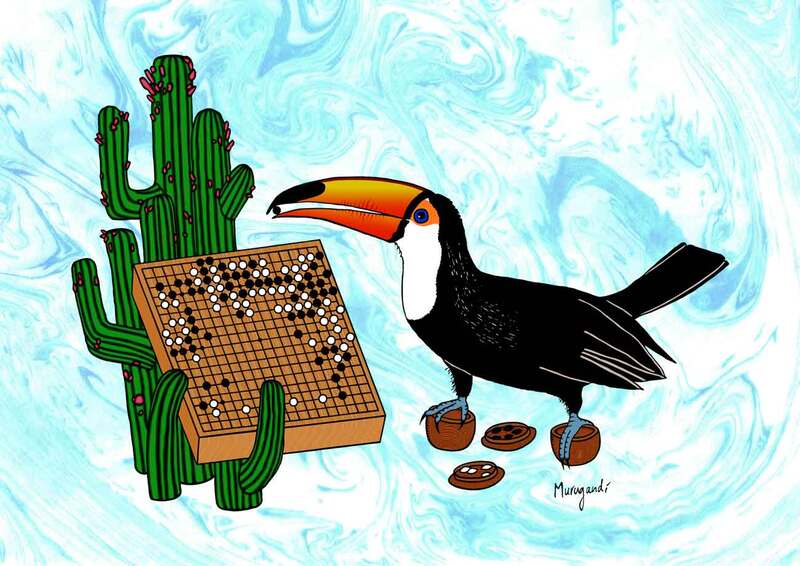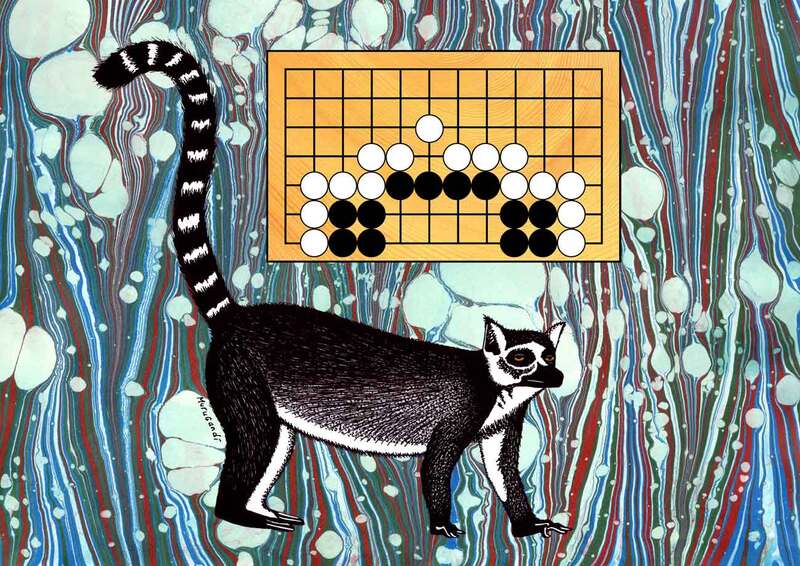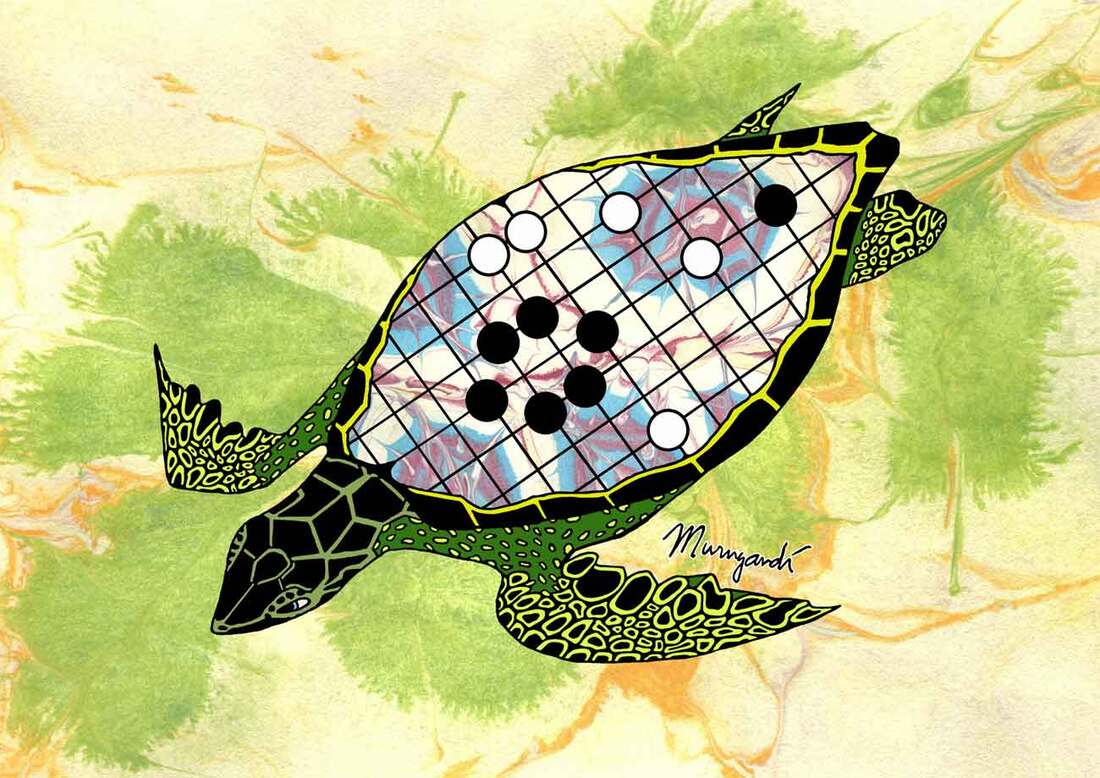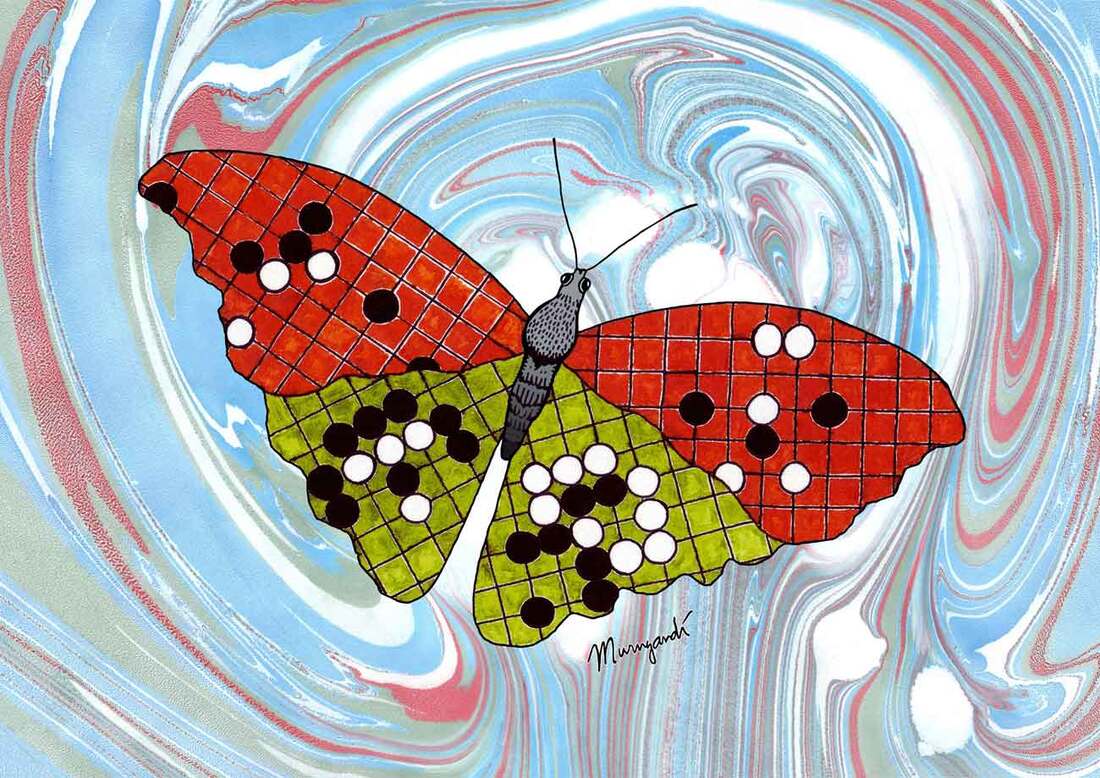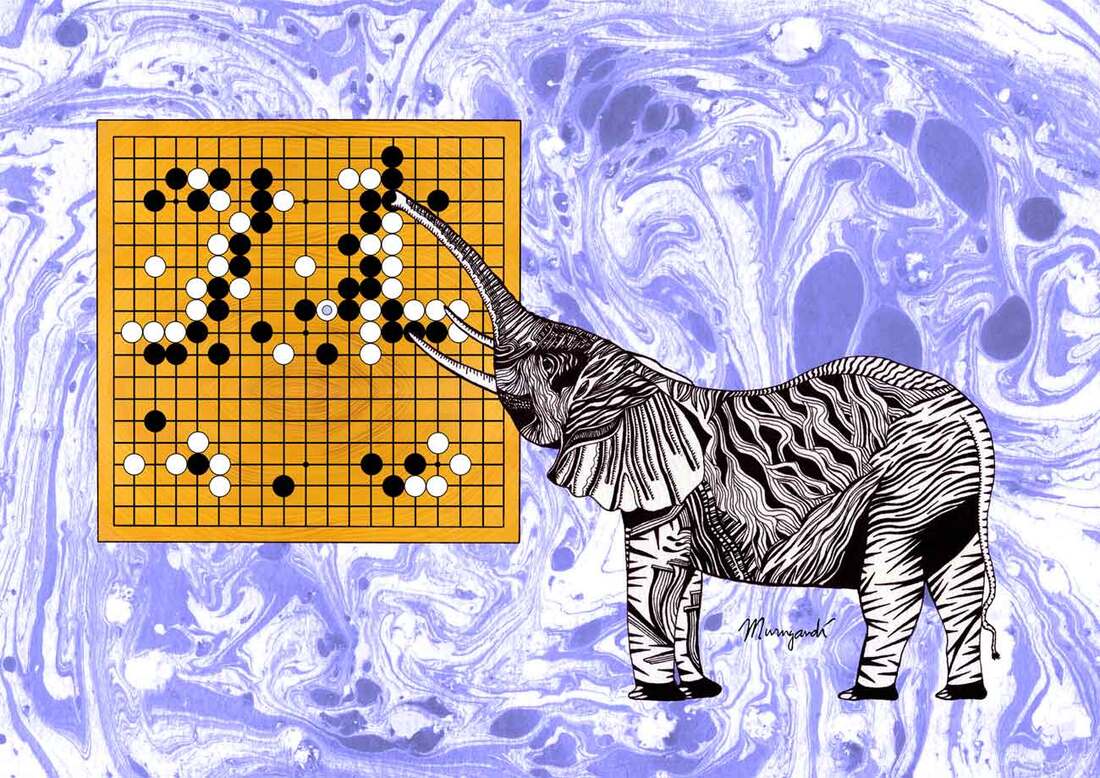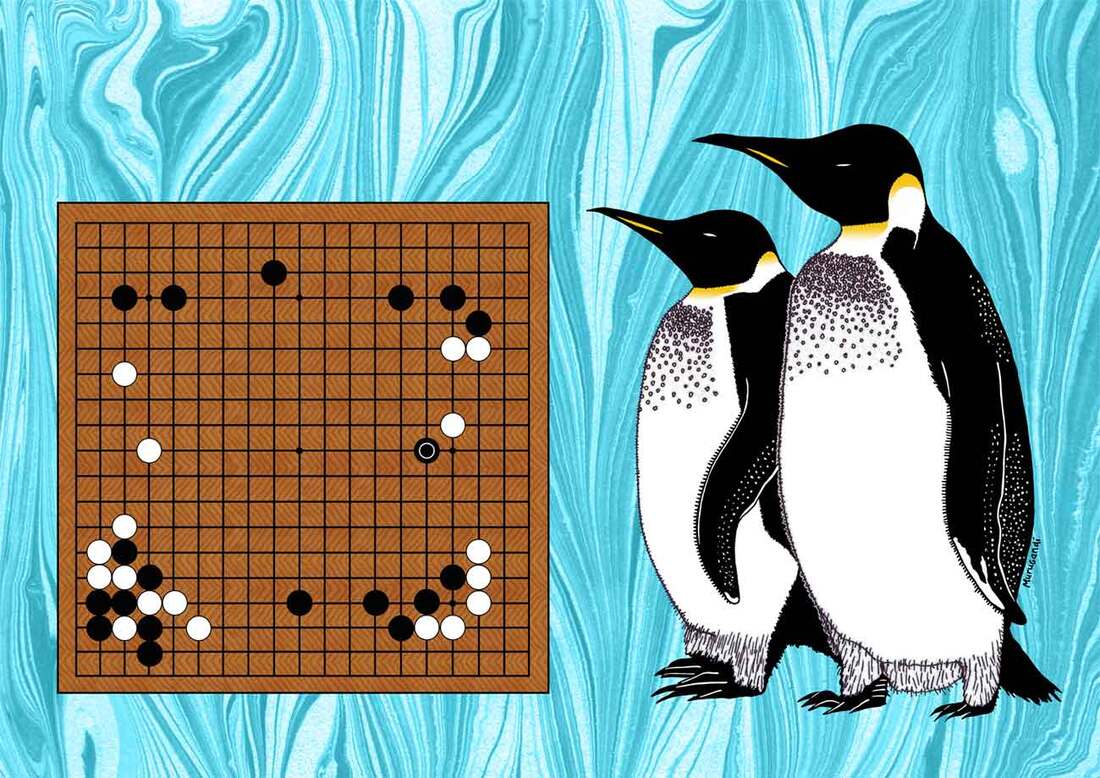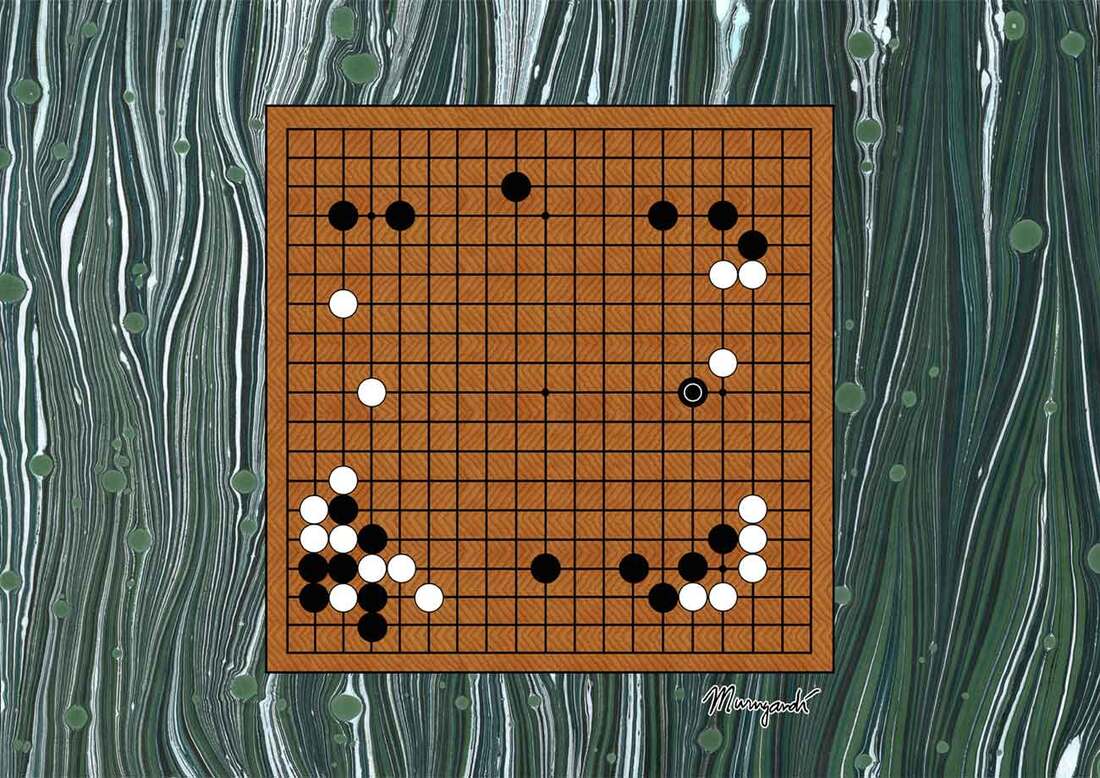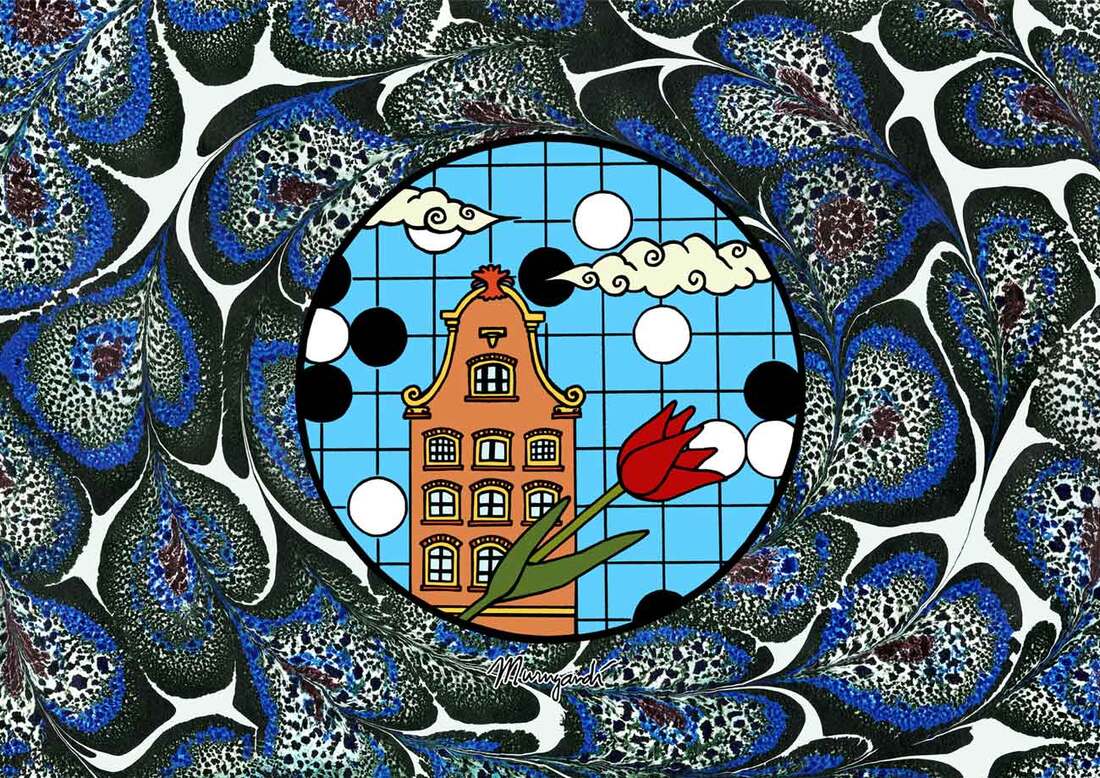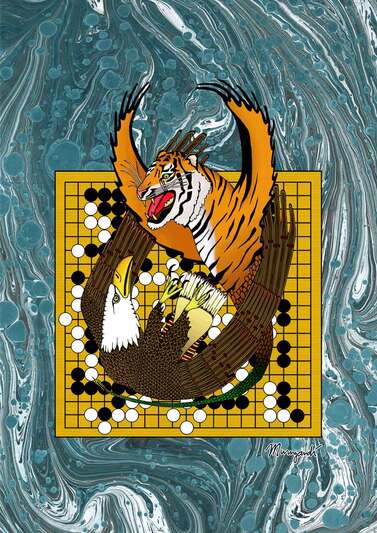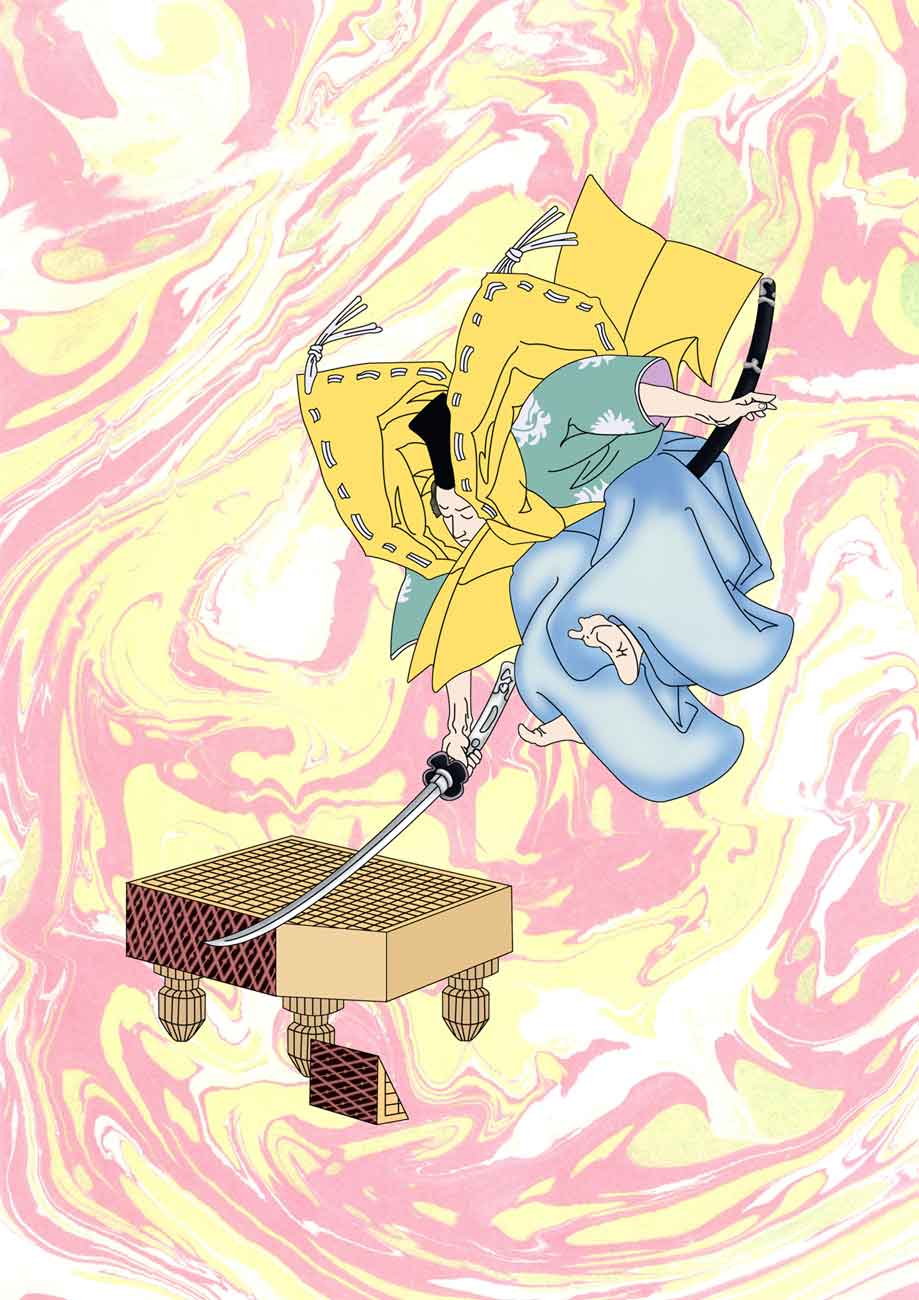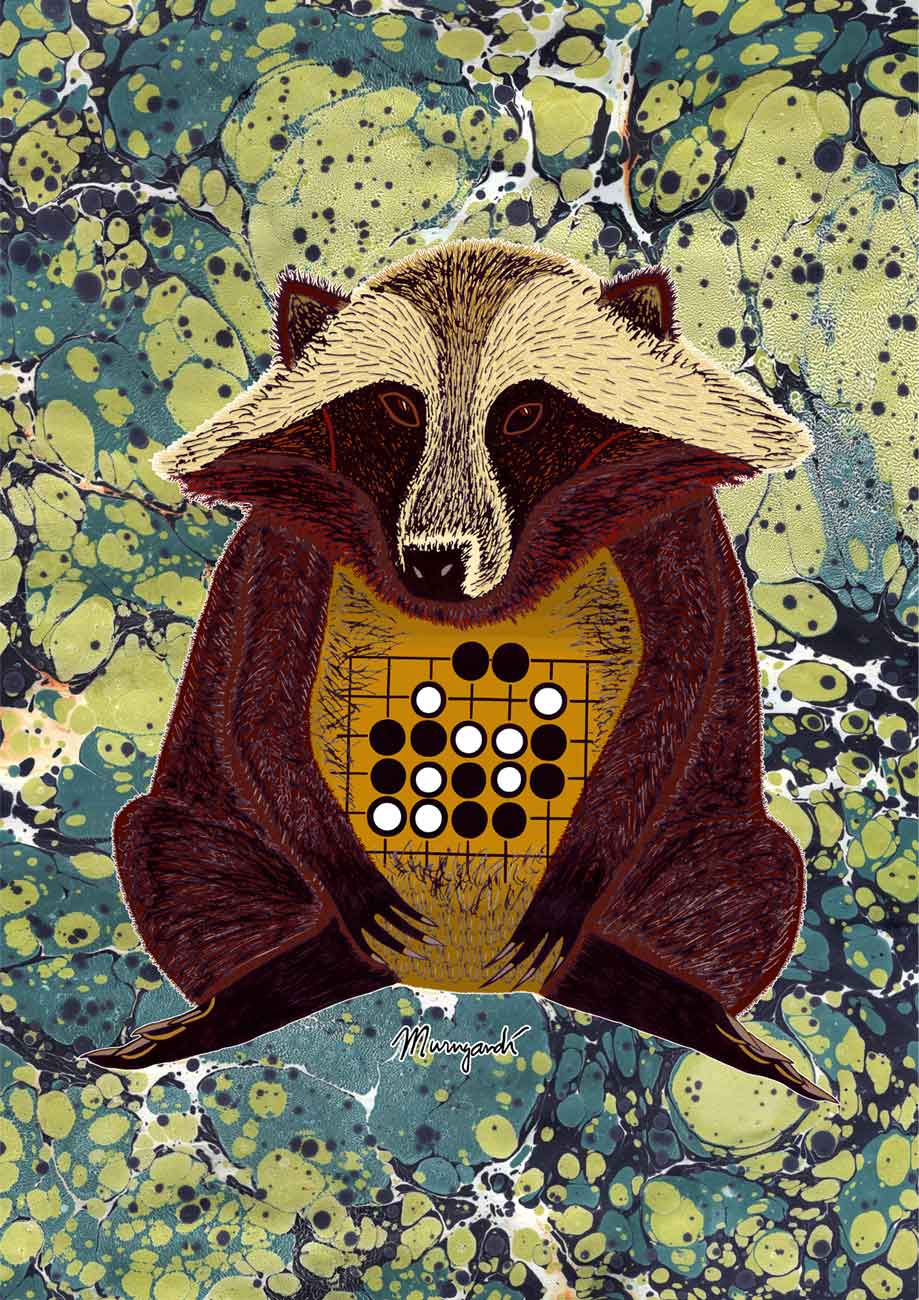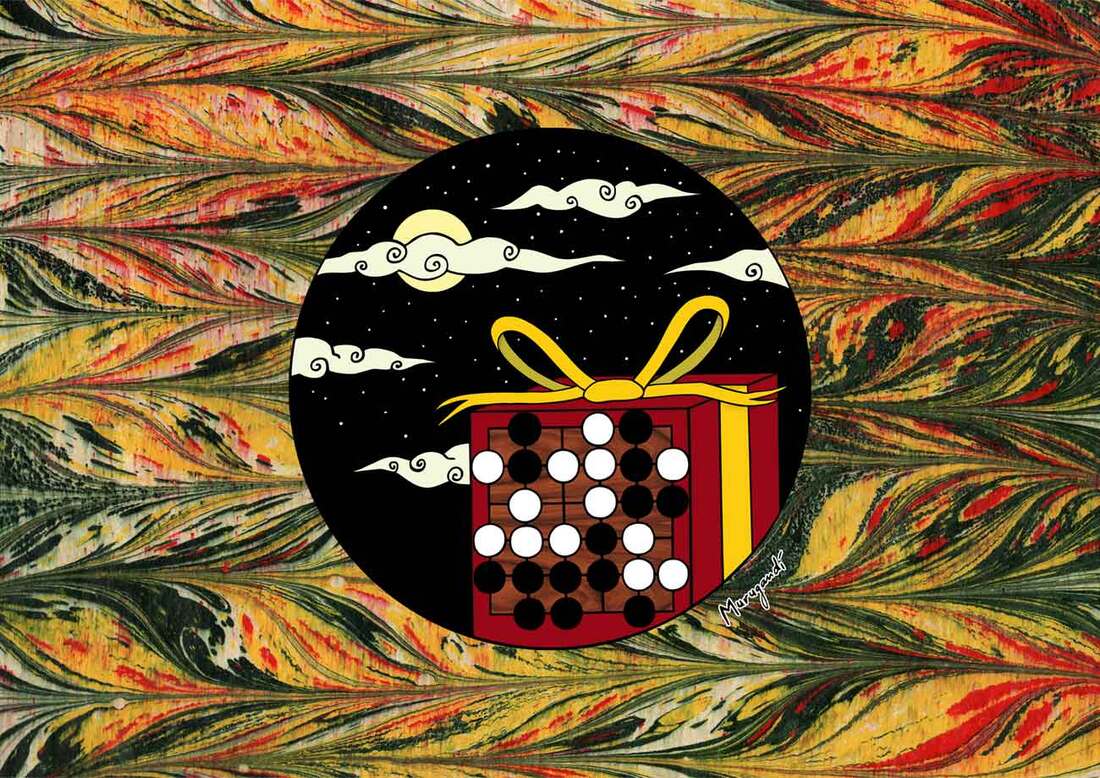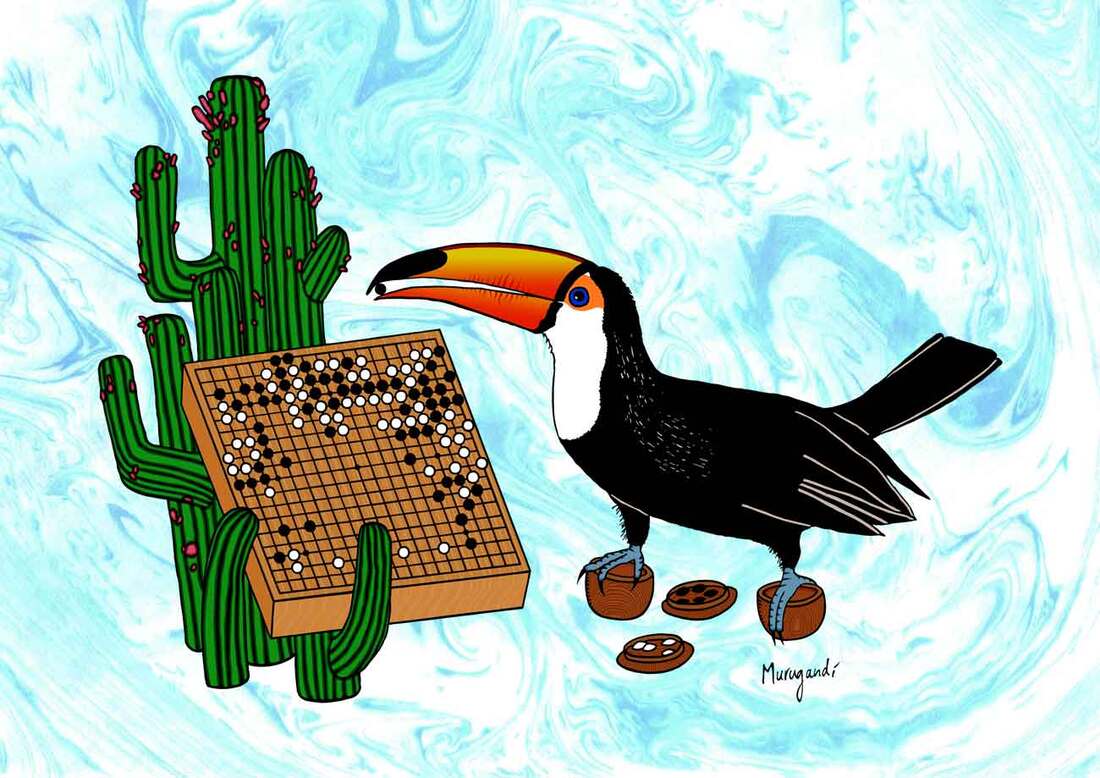|
Today I want to introduce a new part of my blog called Looking Back, which I will use every now and then to share artwork that I have created in the past. As the first post of Looking Back, I would like to share a series of 12 go artworks that I have made so far. This ongoing series features animals, paper marbling (known as suminagashi in Japan and ebru in Turkey) and the game of go (known as igo in Japan, baduk in Korea and weiqi in China). Several of these designs refer to the names of patterns and shapes in the game of go that often are derived from nature. For other artworks I took inspiration from famous go matches or gave my own twist to commissioned work. I sell these designs as postcards and posters in various sizes. This project started little over a year ago, when I realised I want to offer my art in an affordable format. I did however want to be able to guarantee the best quality possible and that is why I decided to make the products myself at home. After taking a chance and purchasing a professional printer in December 2018 I soon found out that it is not easy to find the right paper. Not too thin and shiny for the postcards, not too thick and plain for the posters. After several frustrating weeks of failed tries I finally found the right materials and started offering my work online. Since then I have worked together with many go organisations as well as individual buyers. For those of you who are new to the game of go: go is a strategic board game in which black and white take turns, placing stones on a board, specifically on the intersections of the indicated lines. The goal of the game is to surround territory with your stones and whoever has surrounded most territory at the end of the match wins. The rules of go are simple, but the game never gets boring as there is an almost infinite amount of possibilities that makes every match you play a new challenge. I have been hooked on go ever since I started playing in September 2004. The game, mind sport, art of go or whatever you want to call it has had a significant influence on my life. It gave me an outlet for my competitiveness, made me part of a community, influenced my drawings and even got me several jobs promoting the sport. You can read more about my go background in the GAME OF GO tab. Do you like my go art and do want to support me? Check out my Etsy shop for posters and postcards.
2 Comments
Antonie Van den Berg
3/4/2020 09:23:42 pm
Great. Thank you for the art. Thank you for the explanation.
Reply
Leave a Reply. |
AuthorWelcome to my website! My name is Kim Ouweleen, my artist pseudonym is Murugandi. I am an illustrator, author, proofreader and go teacher from Amsterdam. Do you want to support my art? I take on private commissions.
On Etsy I sell prints, postcards and mugs.
On Spreadshirt I sell clothing, mouse pads, stickers & more.
Want to stay updated on my latest art? Click below to subscribe to my newsletter.
You can view my previous newsletters here.
Archives
June 2024
Categories
All
|
